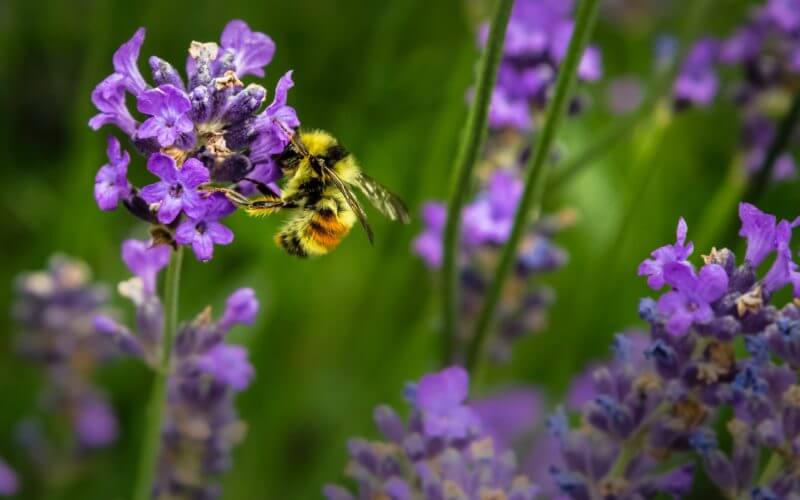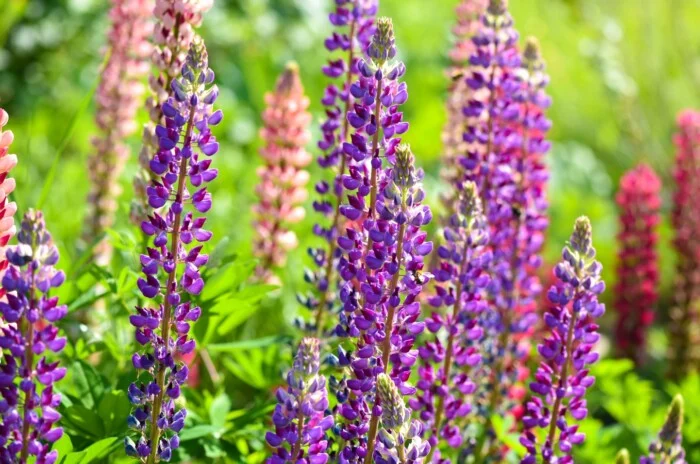Certainly! Here’s a fully optimized, detailed, and advanced guide on:
19 Perennial Companion Plants for Blazing Star Flowers (Liatris)
How to Create a Stunning, Pollinator-Friendly Garden With Perfect Liatris Companions
Blazing Star flowers, also known as Liatris, are vibrant, spiky perennials known for their tall purple (and sometimes white or pink) flower spikes that bloom from top to bottom. These native North American wildflowers are prized for their drought tolerance, easy maintenance, and magnetism for pollinators like butterflies and bees.
But did you know that companion planting with Liatris can take your garden to the next level?
In this comprehensive guide, we’ll explore 19 perennial companion plants that pair beautifully—both aesthetically and ecologically—with Blazing Star flowers. Whether you’re designing a pollinator garden, a low-maintenance native bed, or a drought-resistant landscape, these companions will help your Liatris thrive.

🌿 Why Plant Companion Perennials With Liatris?
Liatris thrives in full sun, well-draining soil, and dry to moderately moist conditions. It grows in upright spikes ranging from 2 to 5 feet tall, depending on the species (e.g., Liatris spicata, Liatris pycnostachya, or Liatris aspera). It makes an excellent backbone plant in sunny borders, wildflower meadows, or native prairie gardens.
Here’s how the right companions help:
- Attract pollinators & beneficial insects
- Balance height & texture in design
- Fill in space at the base of Liatris
- Bloom at complementary times
- Create natural weed suppression
- Enhance drought resistance
🌸 19 Perennial Companion Plants for Blazing Star Flowers
Grouped by function and benefits:
🐝 Pollinator Magnets
These plants bloom around the same time as Liatris and attract bees, butterflies, and hummingbirds.
- Echinacea (Coneflower)
- Long-lasting blooms with similar sun and soil needs
- Attracts bees and butterflies
- Pairs beautifully with Liatris spikes
- Monarda (Bee Balm)
- Great for attracting hummingbirds and native bees
- Blooms in reds, purples, and pinks
- Pairs well with the vertical form of Liatris
- Rudbeckia (Black-eyed Susan)
- Late-summer color
- Hardy and drought-tolerant
- Yellow contrasts beautifully with Liatris purple
- Coreopsis
- Sunny daisy-like flowers in yellow or red hues
- Excellent filler and pollinator-friendly
- Tolerates dry, sandy soil
- Agastache (Hyssop)
- Tall, aromatic spikes in blues, pinks, or oranges
- Attracts bees, butterflies, and hummingbirds
- Adds vertical structure and color diversity
- Penstemon (Beardtongue)
- Tubular flowers loved by hummingbirds
- Native to many U.S. regions
- Well-suited to dry gardens
- Salvia (Perennial Sage)
- Long-blooming, deer-resistant, and aromatic
- Rich purple or blue flowers coordinate beautifully
- Provides contrasting texture and form
💐 Color & Texture Companions

These add contrast in bloom form, foliage color, and structure.
- Gaillardia (Blanket Flower)
- Bright, bold colors (reds, yellows, oranges)
- Low-growing with a sprawling habit
- Great at base of tall Liatris spikes
- Yarrow (Achillea millefolium)
- Flat flower heads complement Liatris spikes
- Feathery foliage adds texture
- Heat and drought tolerant
- Shasta Daisy (Leucanthemum)
- Classic white flowers contrast with Liatris colors
- Long-blooming and low maintenance
- Excellent for garden brightness
- Russian Sage (Perovskia atriplicifolia)
- Wispy lavender-blue blooms
- Silvery foliage offers cool contrast
- Excellent backdrop or filler for tall Liatris
- Gaura (Whirling Butterflies)
- Airy, delicate white or pink flowers
- Long blooming, drought-tolerant
- Adds movement and softness near Liatris
- Amsonia (Bluestar)
- Fine, willow-like foliage and soft blue flowers in spring
- Turns golden in fall—great seasonal interest
- Ideal backdrop or transition plant
☀️ Drought-Tolerant Native Allies
These natives thrive in the same conditions as Liatris and promote a balanced ecosystem.
- Little Bluestem (Schizachyrium scoparium)
- Clump-forming grass with beautiful blue-green blades
- Turns reddish-orange in fall
- Pairs well with prairie-style Liatris beds
- Prairie Dropseed (Sporobolus heterolepis)
- Low, fine-textured grass with fragrant seed heads
- Softens base of taller plants
- Adds movement and resilience
- Butterfly Weed (Asclepias tuberosa)
- Bright orange flowers beloved by monarchs
- Thrives in dry, sandy soil
- Blooms in early-to-mid summer alongside Liatris
- Wild Bergamot (Monarda fistulosa)
- Native bee balm species with soft purple blooms
- Very hardy and adaptable
- Lovely when interspersed with Liatris in natural plantings
- Sedum (Stonecrop)
- Succulent foliage with clusters of star-shaped flowers
- Great for edging or dry, sunny slopes
- Use varieties like Autumn Joy or Matrona
- Bluestar Grass (Sisyrinchium angustifolium)
- Grass-like foliage and star-shaped blue flowers
- Compact and tidy
- Complements Liatris’ spiky shape
🌾 Design Tips for Planting Liatris With Companions

1. Layer Heights Strategically
- Tallest in back or center (Liatris, Agastache, Russian Sage)
- Medium plants in front (Rudbeckia, Echinacea, Yarrow)
- Low growers near edge (Sedum, Coreopsis, Bluestar Grass)
2. Repeat Colors for Cohesion
Use pops of purple, yellow, white, and orange throughout to create rhythm.
3. Think Seasonally
- Combine spring bloomers (Amsonia, Bluestar Grass)
- Mid-summer peaks (Liatris, Echinacea, Bee Balm)
- Late-season interest (Sedum, Little Bluestem, Rudbeckia)
4. Mass Plant for Impact
Plant in drifts or clusters for a natural look and to help pollinators find their favorite flowers.
5. Mulch Lightly
Use gravel or natural mulch to keep weeds down while letting drought-tolerant perennials breathe.
❌ Plants to Avoid Near Liatris
- Moisture-loving perennials like Astilbe or Hostas (too much water)
- Shade plants like Ferns or Heuchera (Liatris needs full sun)
- Aggressive spreaders like Mint (can choke out slower growers)
- Dense, mat-forming groundcovers that prevent airflow at the base
🐞 Pest & Disease Management in Liatris Beds
Liatris is generally pest-resistant, but here’s how companion plants can help:
| Problem | Companion Help |
|---|---|
| Aphids | Use Dill, Yarrow, or Gaillardia to attract ladybugs |
| Poor Pollination | Add Bee Balm, Echinacea, or Salvia |
| Slugs/Snails | Avoid excess mulch; plant herbs like Catmint or Lavender nearby |
| Powdery Mildew | Improve airflow with spacing and avoid dense underplanting |
Table of Contents
📋 FAQs: Companion Plants for Liatris
Q1: What is the best native plant to pair with Liatris?
Butterfly Weed – both thrive in dry, sunny spots and attract pollinators, especially monarchs and bees.
Q2: Can I grow Liatris with ornamental grasses?
Yes! Grasses like Little Bluestem or Prairie Dropseed add structure, movement, and fall interest.
Q3: Is Liatris deer resistant?
Yes, Liatris is typically deer and rabbit resistant, making it ideal for open landscapes.
Q4: Will Liatris spread?
Yes—Liatris spreads slowly via corms and may reseed lightly. It’s not invasive but will naturalize in the right setting.
Q5: Do I need to deadhead Liatris?
Not necessary, but deadheading can prolong bloom time. Leave seed heads if you want birds to feed on them in fall.
Q6: Can I grow Liatris in containers with other plants?
Yes, but choose compact varieties like Liatris spicata ‘Kobold’ and pair with low growers like Coreopsis or Sedum.
Q7: When should I plant Liatris companions?
Plant in spring or fall—same as Liatris. Make sure companions share light and soil needs.
Q8: How much sun do Liatris companion plants need?
Most thrive in full sun (6–8 hours daily)—a key factor in matching companions successfully.
Q9: Are all the listed companions perennials?
Yes! All 19 plants are perennials, meaning they return year after year, just like Liatris.
Q10: Do these companions attract pollinators?

Absolutely. Many—like Bee Balm, Coneflower, and Yarrow—are top pollinator plants for native gardens.
🌼 Final Thoughts
Blazing Star flowers (Liatris) are already stunning on their own—but with the right perennial companions, they can become part of a dazzling, pollinator-friendly garden that thrives year after year.
These 19 companion plants not only enhance Liatris visually, but also improve soil health, attract beneficial insects, suppress weeds, and create a resilient ecosystem.
Whether you’re designing a prairie-style native bed or a bold border full of color and movement, these combinations will help your garden look amazing from spring through fall—with minimal maintenance.

